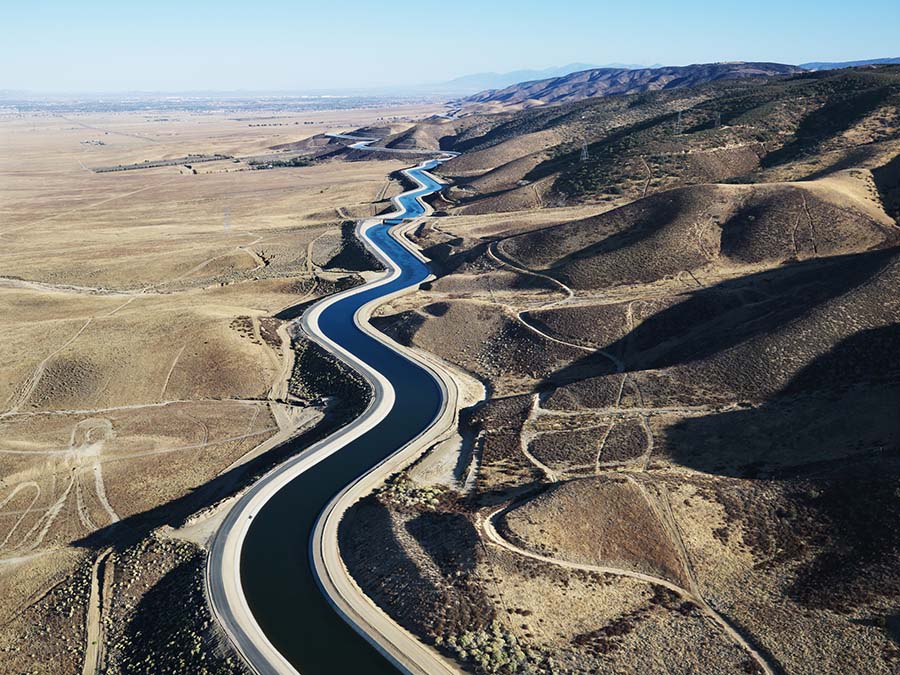Introduction
California is turning to technological innovation as a key tool in mitigating the effects and managing the challenges of water scarcity. From advanced irrigation systems to pioneering water recycling methods, technology plays a crucial role in reshaping how the state conserves and utilizes its precious water resources.
This article explores an array of cutting-edge technologies being employed across various sectors in California, highlighting how innovation drives more efficient water use and sustainable management practices. These technological solutions offer immediate relief in times of drought and pave the way for long-term resilience in an era marked by climatic uncertainties. The adoption and development of these technologies underscore California’s commitment to finding sustainable solutions to one of its most pressing environmental challenges.
Water Conservation and Management Technologies
Smart Irrigation Systems
Smart irrigation technologies are revolutionizing water use in California’s agricultural and landscaping sectors. Sensor-based systems employ soil moisture sensors to provide real-time data on ground conditions. These systems can significantly reduce water waste by applying irrigation in precise amounts and only when necessary.
Automated weather tracking integrates local meteorological data to adjust watering schedules and amounts based on expected rainfall, humidity, and temperature, further optimizing water use. These systems improve water use efficiency, which is crucial in a state where agriculture consumes a significant portion of the water supply.
Leak Detection and Water Infrastructure Monitoring
AI and IoT in Water Infrastructure: Artificial Intelligence (AI) and the Internet of Things (IoT) are at the forefront of detecting leaks and ensuring the integrity of water infrastructure in urban settings. AI algorithms analyze data from IoT sensors installed throughout water distribution networks to detect anomalies that signal leaks or weaknesses in the system. These devices enable real-time monitoring and control of the water infrastructure, ensuring quick responses to potential issues. This technology is instrumental in reducing water loss through leaks, a significant problem in municipal water systems.
Water Recycling and Reuse
Wastewater to Drinking Water
Water recycling and reuse in California, particularly in the context of ongoing droughts, are seeing significant advancements, with projects like Orange County’s Groundwater Replenishment System leading the way. This system, the world’s largest of its kind, exemplifies the potential of advanced water recycling technologies. Wastewater is purified using a sophisticated three-step treatment process and reintroduced into the groundwater basin, contributing to the region’s water supply.
While Orange County focuses on indirect potable reuse, other districts in California are considering direct potable reuse as a cost-effective alternative. At the close of 2023, California became the second U.S. state to allow agencies to purify wastewater and turn it into tap water to adapt its water supply to drought conditions. This method leverages existing infrastructure, bypassing the need for separate systems for recycled water. It represents a shift toward utilizing a more consistent and drought-resistant water source, as wastewater generation remains constant even during droughts. The potential for this approach is significant, with projections suggesting that treated wastewater could constitute 10%-15% of some coastal communities’ water supply during droughts and potentially 25%-40% or more in the future.
The Metropolitan Water District’s Pure Water Southern California project represents an ambitious shift in this direction. Slated to become the country’s largest water-recycling project with a $6 billion facility, it plans to start direct potable reuse, initially replenishing groundwater basins and serving industrial users. By 2028, it will deliver treated water to recharge aquifers or supply potable water to regional communities as needed.
The anticipated gradual decline in imported water supplies underscores the importance of closing the water use cycle through advanced treatment to provide a sustainable and resilient solution.
Public Acceptance
In the final weeks of 2023, California became the second US state to permit cities to directly recycle wastewater into tap water as part of its comprehensive response to the threat of years-long droughts and water scarcity.
Treated wastewater has long been reused for irrigation or aquifer replenishment, but public resistance to the concept of drinking “toilet water” has been powerful. Still, over the last three decades, while acceptance is still not universal, attitudes have relaxed as awareness of chronic water scarcity and severe droughts has increased.
Despite a series of atmospheric rivers that saturated much of the state in early 2023, California only recently suffered from an extreme multi-year drought that scientists said included the driest three-year period on record.
California’s recent legislative action covers new technology that can convert recycled wastewater to drinking water standards in hours, allowing it to be directly reintegrated into the water supply for homes, schools, and businesses. This innovative approach addresses the inefficiency of discharging highly treated wastewater into the ocean, especially as water sources from the Colorado River and the Sierras are expected to face more intense and frequent drought conditions.
Conclusion
California’s response to its severe drought challenges through technological advancements marks a significant stride in sustainable water management. Innovations such as smart irrigation and advanced water treatment technology are revolutionizing how the state conserves and replenishes its water resources. These technologies offer immediate solutions to recurring drought conditions and pave the way for long-term resilience. By embracing these cutting-edge approaches, California is setting a precedent for effective water management strategies that could be adopted globally. Ultimately, these technological advancements ensure a reliable water supply for future generations, even as environmental challenges intensify.




